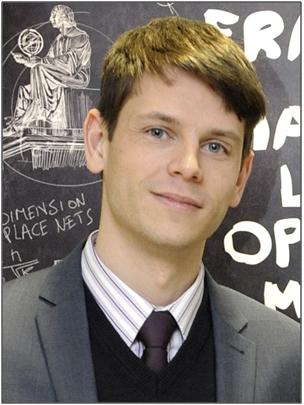 ‘Information overload requires accurate filtering to find answers we need’
‘Information overload requires accurate filtering to find answers we need’
Tomás Sánchez López is the Research Team Leader of the Information Fusion Team in EADS Innovation Works UK.
Advances in computing and the rise of the information society, not only through the mass use of the Internet but also through the ubiquity of computer devices (e.g. mobile phone, tablet devices, sensors, etc.), are causing a data overload crisis. The amount of information that is being produced is such that we cannot effectively work with it. In reality, embracing the excitement of the modern world of computing has resulted in creating too much of this valuable data – so much in fact that we lose this value as we can’t see the wood for the trees.
Everywhere there are mobile phones and tablets, images and text, tweets and posts. This is where we need ‘information fusion’, techniques to filter and process these massive amounts of information, so that we can extract the answers we need as effectively as possible.
When we talk about Information Fusion we normally refer to the use of complex mathematical formulas (algorithms) that receive as input data in a variety of form such as images, text, audio or just numbers. The fusion process not only reduces the amount of information to work with, but also generates additional information which is more than the sum of its inputs. Information Fusion is not something that humans have invented, and occurs constantly in the biological world.
Our bodies, minds and the world we live in are constantly using fusion processes to aid us to see, smell, react and make decisions. It is this logical, intelligent process that we are trying to mimic, and improve, through the development and application of fusion technology.
We can use Information Fusion to monitor energy or water usage in households and cities or to monitor the health and stress levels not only of patients but also of complex machines such as aircrafts or satellites. We can also use it to assist police forces in crime discovery and solving by automatically analysing police databases, witness reports and internet web sites.
Forecasting traffic flows on motorways to prevent accidents, ensuring we have electricity when we make a cup of tea and positioning the satellite for your mobile phone are all examples where ‘information fusion’ has an effect on our lives every day.
But Information Fusion can also be used for making predictions by finding patterns in the information and understanding how they repeat over time. We could then use Fusion for assessing threats such as those arising from terrorism and natural disasters, or understanding the sentiment of citizens and communities and therefore provide responses before unrest occurs.
In the Information Fusion team at EADS Innovation Works UK, based in Newport, we specialise in researching Information Fusion technology in a wide range of aerospace, defence and security application related to the needs of the EADS corporate group, often in collaboration with academic institutions and industry partners.
Tomás may be contacted at: tomas.sanchelopez@eads.com
This article first appeared in the Western Mail on 16th December 2013, as part of the Welsh Crucible series of research profiles.
